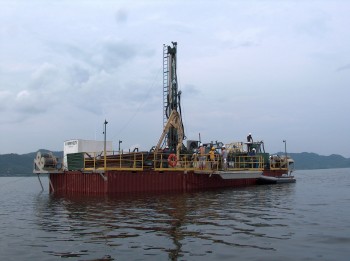The Future of the African Monsoon
November 2, 2015

Climate, Carbon & Geobiology
The Sahara conjures images of a vast desert landscape, but for a period of about 10,000 years the Sahara was characterized by lush, green vegetation and a network of lakes, rivers and deltas.
This “green Sahara” occurred between 14,800 and 5,500 years ago during what is known as the “African Humid Period.” Why and how it ended is the subject of scientific study that holds important information for predicting the region’s response to future climate change.
In a study published Jan. 26, 2015, a team of researchers provided new insight into the behavior of the African monsoon at the end of the African Humid Period and the factors that led to the region’s desertification.
“Our work suggests that the African monsoon’s response to climate forcing is more complicated than previously understood,” said lead author Timothy Shanahan, assistant professor at the Jackson School of Geosciences. “Really big forcings like a collapse in the circulation of the Atlantic can cause synchronous drought across North Africa.”
Africa’s tropical rainbelt supplies about 60 to 90 percent of northern and equatorial Africa’s annual moisture, the study noted. As a result, changes in the timing or intensity of seasonal rainfall influence food and water security for more than 150 million people.
Back to the Newsletter